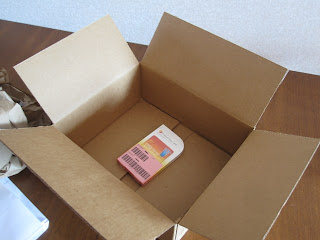As a consultant and therefore an outside pair of eyes to the companies I work with process waste can often be one of the more difficult wastes for me to identify. It can also be the easiest to see in the "why do you do it that way?" scenarios.
This example of Process muda was dumped on me when I decided to update some software on my laptop. Normal ordering method, went to the suppliers website, selected the software I wanted and completed the purchase screen. First email promptly delivered to me confirming the order. Next a second email was delivered to me with the invoice details. All good to date. Then I waited. And I waited some more. Three weeks later this parcel arrived.
I opened it, curious why the company had sent me such a big box. Was it that they generously wished to send me packaging materials? If you look closely you will notice the box has been labelled three separate times, was one not enough?
Now under all this stuff I don't need and now have to take out and dispose of was what I wanted.
Well, not quite, when you open the package what I really wanted was this
Actually what I really wanted was the 25 character code.
A whole lot of unnecessary work went into delivering these 25 characters to me. The muda included packaging, delivery, handling, me opening and disposing of the packaging which included the cardboard box and the nice plastic software box the key card was in. And lets not forget the three weeks of waiting I did.
And to top it off, the next day in the mail came a copy of the invoice.
The reason this is all so frustrating is I paid for it. I didn't get to pay for what I wanted. I got to pay for a whole lot more, which I didn't want.























